第4166-4167个火星日:满是岩石的花园
在地球上(具体来说是多伦多),四月的天气非常典型,仍未决定是否真正进入春天。在火星(盖尔撞击坑),我们已经进入春天,好奇号正在享受(相对)温暖的天气。随着白天越来越长,天气越来越暖和,我发现自己精力充沛,渴望外出在花园里玩耍。好奇号似乎也有同样的感觉——我们最近电力充足,今天的轻触即走计划也不例外。
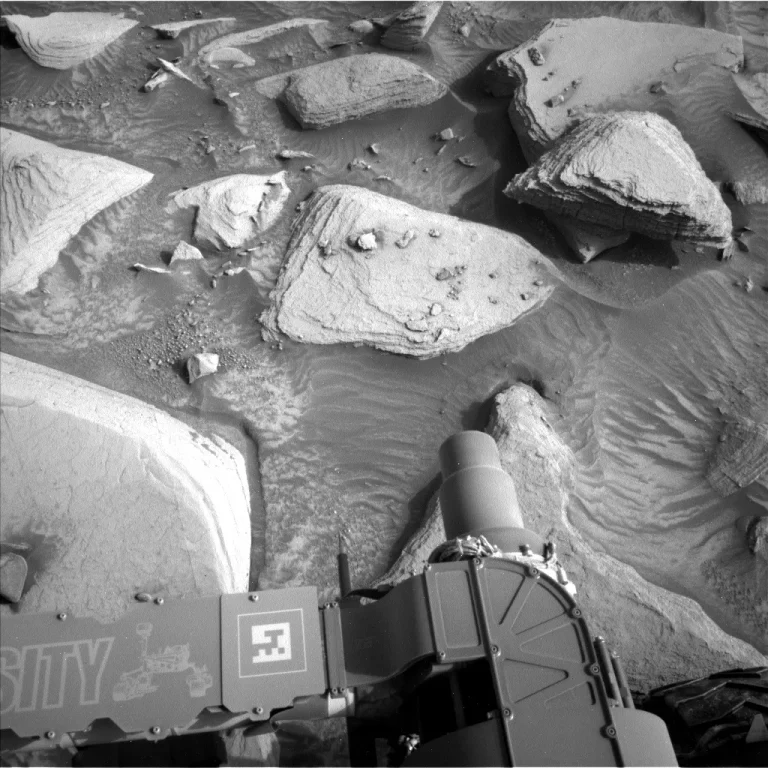
在地球上(具体来说是多伦多),四月的天气非常典型,仍未决定是否真正进入春天。在火星(盖尔撞击坑),我们已经进入春天,好奇号正在享受(相对)温暖的天气。随着白天越来越长,天气越来越暖和,我发现自己精力充沛,渴望外出在花园里玩耍。好奇号似乎也有同样的感觉——我们最近电力充足,今天的轻触即走计划也不例外。
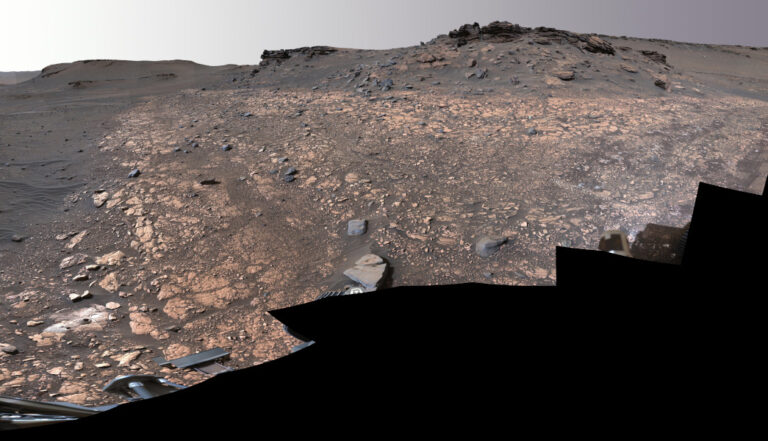
2022年9月17日 Perseverance in Jezero Crater’s Delta Image Credit: NASA, JPL-Caltech, MSSS, ASU Explanation: The Perseverance rover’s Mastcam-Z captured images to create this mosaic on August 4, 2022. The car-sized robot was continuing its exploration of the fan-shaped delta of a river that, billions of years ago, flowed into Jezero Crater on Mars. Sedimentary rocks preserved in Jezero’s delta are considered one of the best places on Mars to search for potential signs of ancient microbial life and sites recently sampled by the rover, dubbed Wildcat Ridge and Skinner Ridge, are at lower left and upper right in the frame. The samples taken from these areas were sealed inside ultra-clean sample tubes, ultimately intended for return to Earth by future missions. Starting with the Pathfinder Mission…
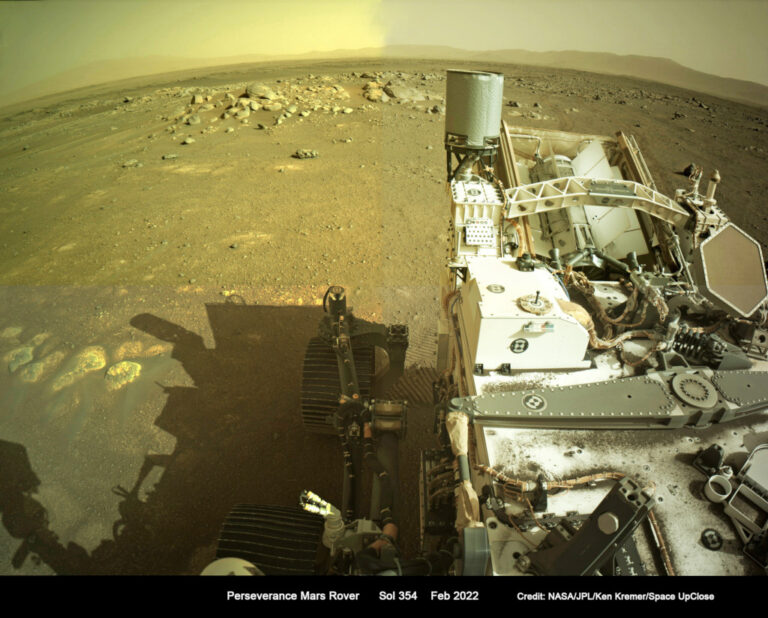
2022年2月25日 Perseverance Sol 354 Image Credit: NASA, JPL-Caltech, Processing: Kenneth Kremer Explanation: This Navcam mosaic from Perseverance looks out over the car-sized rover’s deck, across the floor of Jezero crater on Mars. Frames used to construct the mosaic view were captured on mission sol 354. That corresponds to Earth calendar date February 17, 2022, nearly one Earth year after the rover’s landing. With a mass of over 1,000 kilograms, six-wheeled Perseverance is the heaviest rover to touch down on Mars. During its first year of exploration the rover has collected six (so far) rock core samples for later return to planet Earth, served as the base station for Ingenuity, the first helicopter on Mars, and tested MOXIE (Mars Oxygen In-Situ Resource Utilization Experiment), converting some…

2021年04月03日 Ingenuity on Sol 39 Image Credit: NASA / JPL-Caltech / MSSS Explanation: The Mars Ingenuity Helicopter, all four landing legs down, was captured here on sol 39 (March 30) slung beneath the belly of the Perseverance rover. The near ground level view is a mosaic of images from the WATSON camera on the rover’s SHERLOC robotic arm. Near the center of the frame the experimental helicopter is suspended just a few centimeters above the martian surface. Tracks from Perseverance extend beyond the rover’s wheels with the rim of Jezero crater visible about 2 kilometers in the distance. Ingenuity has a weight of 1.8 kilograms or 4 pounds on Earth. That corresponds to a weight of 0.68 kilograms or 1.5 pounds on Mars. With rotor…
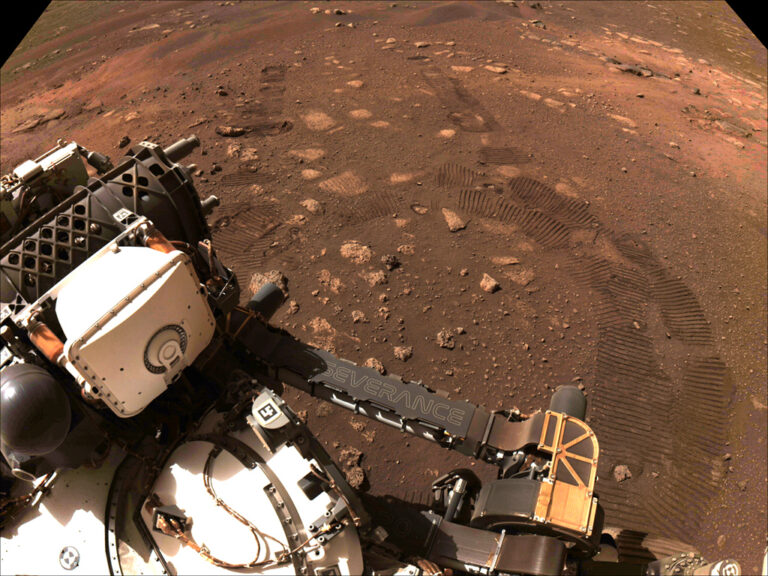
2021年03月06日 Perseverance Takes a Spin Image Credit: NASA, JPL-Caltech, Mars 2020 Explanation: After arriving at Jezero Crater on Mars, Perseverance went for a spin on March 4. This sharp image from the car-sized rover’s Navcam shows tracks left by its six wheels in the martian soil. In preparation for operations on the surface of the Red Planet, its first drive lasted about 33 minutes. On a short and successful test drive Perseverance moved forward 4 meters, made a 150 degree turn in place, backed up for 2.5 meters, and now occupies a different parking space at its newly christened Octavia E. Butler Landing location. Though the total travel distance of the rover’s first outing was about 6.5 meters (21 feet), regular commutes of 200 meters…
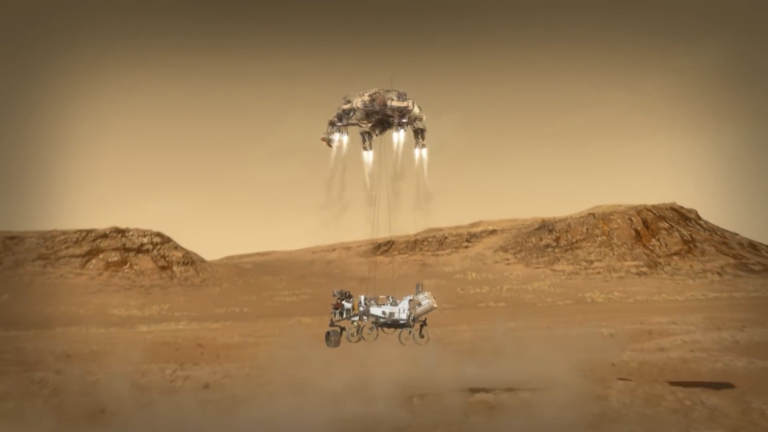
2021年02月16日 Perseverance: Seven Minutes to Mars Video Credit: NASA, JPL Explanation: How hard is it to land safely on Mars? So hard that many more attempts have failed than succeeded. The next attempt will be on Thursday. The main problem is that the Martian atmosphere is too thick to ignore — or it will melt your spacecraft. On the other hand, the atmosphere is too thin to rely on parachutes — or your spacecraft will crash land. Therefore, as outlined in the featured video, the Perseverance lander will lose much of its high speed by deploying a huge parachute, but then switch to rockets, and finally, assuming everything goes right, culminate with a hovering Sky Crane that will slowly lower the car-sized Perseverance rover to…
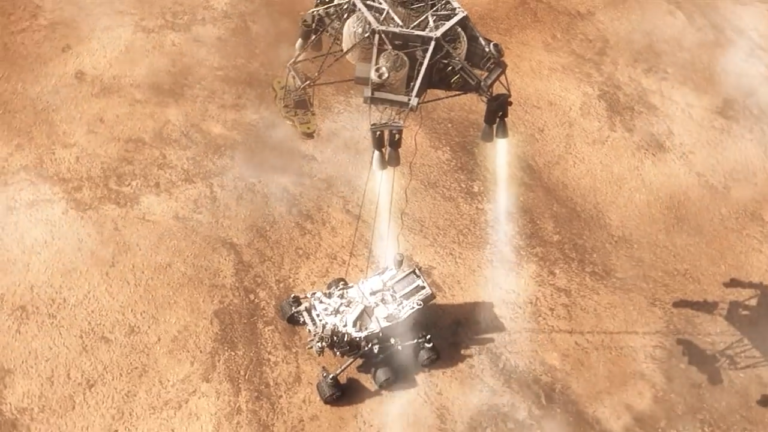
2021年02月15日 Landing on Mars: Seven Minutes of Terror Video Credit: NASA, JPL Explanation: Starting Thursday, there may be an amazing new robotic explorer on Mars. Or there may be a new pile of junk. It all likely depends on things going correctly in the minutes after the Mars 2020 mission arrives at its new home planet and attempts to deploy the Perseverance rover. Arguably the most sophisticated landing yet attempted on the red planet, consecutive precision events will involve a heat shield, a parachute, several rocket maneuvers, and the automatic operation of an unusual device called a Sky Crane. Thursday’s Seven Minutes of Terror echo the landing of the Curiosity rover on Mars in 2012, as depicted in the featured video. If successful, the car-sized…
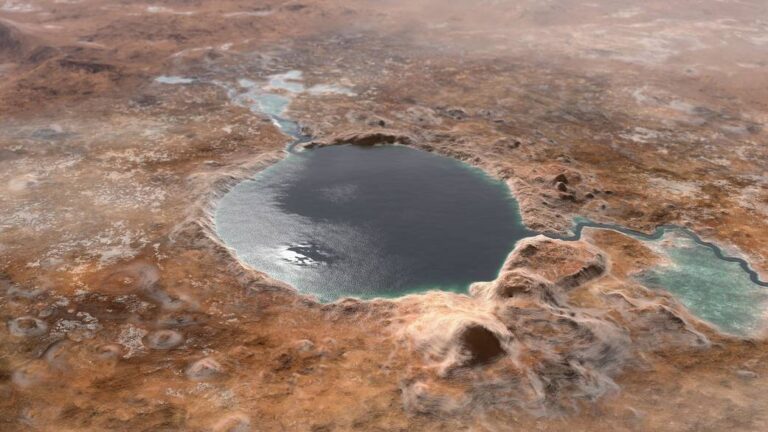
This illustration shows Jezero Crater — the landing site of the Mars 2020 Perseverance rover — as it may have looked billions of years go on Mars, when it was a lake. An inlet and outlet are also visible on either side of the lake. A key objective for Perseverance’s mission on Mars is astrobiology, including the search for signs of ancient microbial life. The rover will characterize the planet’s geology and past climate, pave the way for human exploration of the Red Planet, and be the first mission to collect and cache Martian rock and regolith (broken rock and dust). Subsequent missions, currently under consideration by NASA in cooperation with the European Space Agency, would send spacecraft to Mars to collect these cached samples…

2020年8月22日 Yogi And Friends In 3D Image Credit & Copyright: IMP Team, JPL, NASA Explanation: From July of 1997, a ramp from the Pathfinder lander, the Sojourner robot rover, airbags, a couch, Barnacle Bill and Yogi Rock appear together in this 3D stereo view of the surface of Mars. Barnacle Bill is the rock just left of the solar-paneled Sojourner. Yogi is the big friendly-looking boulder at top right. The “couch” is the angular rock shape visible near center on the horizon. Look at the image with red/blue glasses (or just hold a piece of clear red plastic over your left eye and blue or green over your right) to get the dramatic 3D perspective. The stereo view was recorded by the remarkable Imager for…
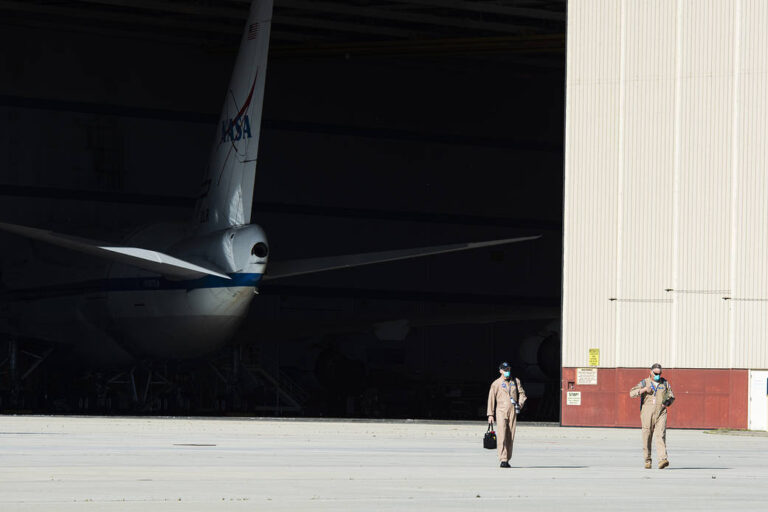
Pilots Troy Asher and Stu Broce walk out of NASA’s Armstrong Flight Research Center’s (AFRC) hangar in Palmdale, California, toward the flight line. In addition to aeronautics research, Flight Operations personnel support such missions as the Mars Perseverance Rover, slated to launch in July 2020. Armstrong’s Building 703 in Palmdale opened in 2007 at the former Rockwell International/North American Aircraft production facility in Palmdale. The Los Angeles World Airports Board of Airport Commissioners endorsed a 20-year lease agreement with NASA for use of a large hangar and surrounding acreage at the facility adjacent to U.S. Air Force Plant 42. Specialized science platform aircraft, such as the DC-8 flying laboratory, high-altitude research aircraft ER-2s, C-20A, Gulfstream III and the Stratospheric Observatory for Infrared Astronomy, are based…